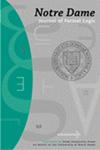Thin Set Versions of Hindman’s Theorem
IF 0.5
3区 数学
Q2 LOGIC
引用次数: 1
Abstract
This paper is part of a line of research on the computability-theoretic and reverse-mathematical strength of versions of Hindman’s Theorem [6] that began with the work of Blass, Hirst, and Simpson [1], and has seen considerable interest recently. We assume basic familiarity with computability theory and reverse mathematics, at the level of the background material in [8], for instance. On the reverse mathematics side, the two major systems with which we will be concerned are RCA0, the usual weak base system for reverse mathematics, which corresponds roughly to computable mathematics; and ACA0, which corresponds roughly to arithmetic mathematics. For principles P of the form (∀X) [Φ(X) → (∃Y ) Ψ(X, Y )], we call any X such that Φ(X) holds an instance of P , and any Y such that Ψ(X, Y ) holds a solution to X . We begin by introducing some related combinatorial principles. For a set S, let [S] be the set of n-element subsets of S. Ramsey’s Theorem (RT) is the statement that for every n and every coloring of [N] with finitely many colors, there is an infinite set H that is homogeneous for c, which means that all elements of [H ] have the same color. There has been a great deal of work on computability-theoretic and reverse-mathematical aspects of versions of Ramsey’s Theorem, such as RTnk , which is RT restricted to colorings of [N] n with k many colors. (See e.g. [8].)Hindman定理的薄集形式
本文是关于Hindman定理[6]版本的可计算性理论和反向数学强度的研究的一部分,该研究始于Blass、Hirst和Simpson[1]的工作,最近引起了人们的极大兴趣。例如,我们假设基本熟悉可计算性理论和逆向数学,处于[8]中背景材料的水平。在逆向数学方面,我们将关注的两个主要系统是RCA0,这是逆向数学通常的弱基系统,大致对应于可计算数学;以及ACA0,其大致对应于算术数学。对于形式为(∀X)[Φ(X)的原理P→ (∃Y)Ψ(X,Y)],我们称任何X使得Φ(X)保持P的实例,以及任何Y使得Ψ(X,Y)保持X的解。我们首先介绍一些相关的组合原理。对于集合S,设[S]是S的n元素子集的集合。拉姆齐定理(RT)是这样的陈述:对于具有有限多个颜色的[n]的每个n和每个着色,存在一个对c齐次的无限集合H,这意味着[H]的所有元素都具有相同的颜色。在拉姆齐定理版本的可计算性理论和逆向数学方面已经做了大量的工作,例如RTnk,它被RT限制为具有k多种颜色的[N]N的着色。(例如参见[8]。)
本文章由计算机程序翻译,如有差异,请以英文原文为准。
求助全文
约1分钟内获得全文
求助全文
来源期刊

Notre Dame Journal of Formal Logic
MATHEMATICS-LOGIC
CiteScore
1.00
自引率
14.30%
发文量
14
审稿时长
>12 weeks
期刊介绍:
The Notre Dame Journal of Formal Logic, founded in 1960, aims to publish high quality and original research papers in philosophical logic, mathematical logic, and related areas, including papers of compelling historical interest. The Journal is also willing to selectively publish expository articles on important current topics of interest as well as book reviews.
 求助内容:
求助内容: 应助结果提醒方式:
应助结果提醒方式:


